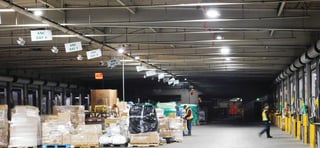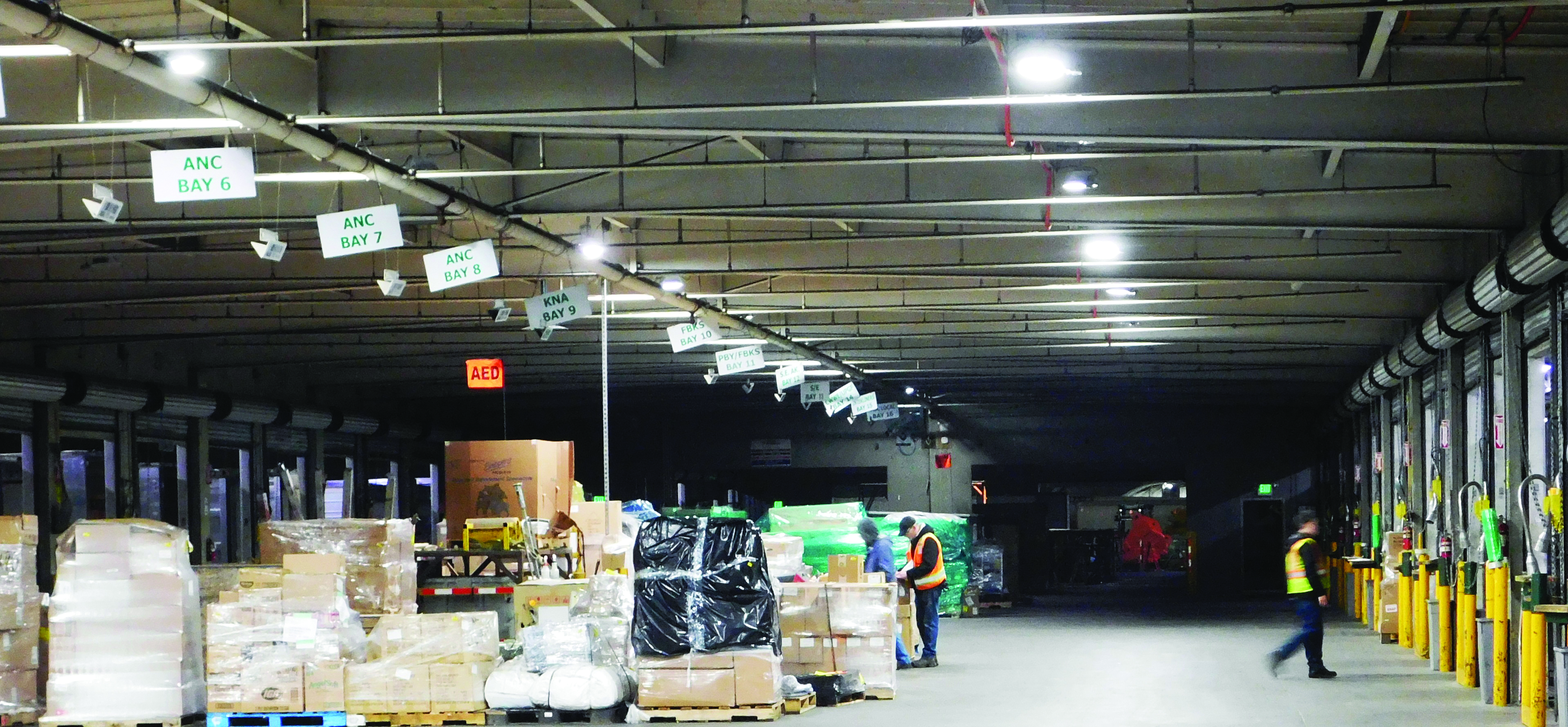 The annual Earth Day celebration is a good time to recognize Lynden employees who continue to do more with less, decreasing their energy use while improving safety and productivity. Since 2008, nearly 50 energy efficiency upgrades at Lynden facilities have led to the reduction of 2,350 megawatt hours of electricity and nearly 7 million British Thermal Units (BTUs) of heating fuel and natural gas per year.
The annual Earth Day celebration is a good time to recognize Lynden employees who continue to do more with less, decreasing their energy use while improving safety and productivity. Since 2008, nearly 50 energy efficiency upgrades at Lynden facilities have led to the reduction of 2,350 megawatt hours of electricity and nearly 7 million British Thermal Units (BTUs) of heating fuel and natural gas per year.
According to Anna Deal of Lynden’s Green Initiative, that’s the equivalent of the average energy used in 167 homes or 335 passenger vehicles in one year! "Some of the most impressive reductions at Lynden have come from steady and consistent efforts and continuous improvement," she says.
For example, Lynden Transport’s Anchorage Service Center has reduced its heating fuel use by 20 percent over the last eight years by repairing insulation, sealing air gaps in the dock doors and dock plates with rubber, and installing new dock shelters. Most recently, a new direct digital controlled thermostat is reducing natural gas use even further. The Anchorage team invested in a series of lighting upgrades that has reduced electricity use by 20 percent, despite adding eight electric forklifts.
"One of the unexpected benefits of using electric lifts is the CO2 fan no longer kicks on in the cross-dock," says Richard Hennagin, Lynden Transport Safety Manager. "In a way, the lifts run for free because the fans are no longer pushing warm air outside or using electricity to run."
LTI, INC.
Similarly, the LTI, Inc. Service Center in Lynden, WA has reduced its overall electricity use by 37 percent since 2008. Employees have upgraded old lighting and HVAC systems, installed LED lights in the remodel, and most recently, yard lights were replaced with LEDs.
"One of the most exciting changes in the last few years is the number of Lynden facilities moving to LED lights," Anna says. "These lights give better quality light that mimics natural daylight while using a third of the energy. They last longer, so don’t need to be replaced as often. They are dimmable and turn on instantly, so they work well with smart sensor technology and there’s no mercury to dispose of when they do burn out."
More improvements throughout the companies:
ALASKA WEST EXPRESS
Alaska West Express in Fairbanks has some of the highest energy costs of any Lynden facility due to a lack of energy options, cold temperatures and the size of the 30-acre facility. Over the last few years the team replaced high wattage lights in the maintenance and tank-cleaning facilities as well as 76 yard lights with energy efficient LED lights. They reduced their electricity usage by 14 percent with a 2.5 year payback to recoup costs. "The best part is, the guys in the shop don’t have to wear their headlamps around anymore," says Gage Schutte, Alaska West Express Service Center Manager.
ALASKA MARINE LINES
Alaska Marine Lines began testing LED lights in the Seattle yard in 2015. "With a payback of less than three years and a 20-year lifespan, it seemed like a no-brainer," says Mark Gaska (now with Alaska West Express in Tacoma). Since then, M&R interior and exterior lights and salt tent lights have all been replaced with LEDs and smart sensors that adjust lighting output based on daylight levels and movement. Most recently, Alaska Marine Lines in Seattle became the first port facility in the world to use stadium style LED lights to light the yard.
"The truck entry lane in Yard 5 needed additional light for safety and security. Rather than disrupting operations and trenching power to install a new pole, we decided to use high mast LED lights. The difference is literally night and day. The safety crew and especially the night crew are very happy," says Tom Crescenzi, Alaska Marine Lines Service Center Manager.
LYNDEN TRANSPORT—Lower 48
Lynden Transport in Fife recently replaced lighting in the cross dock and yard (see photo on page 1). "The biggest benefit is safety," says Keith Johnson, Safety Supervisor. "After we moved to electric lifts, you couldn’t hear the lift approach over the buzzing sound of the old lights. The LED lights are quiet and the crew is able to read paperwork without going to the forklift for light." Lynden Transport Service Centers in Soldotna and Fairbanks also recently replaced their yard lights with LEDs.
"Even with all of the reductions at Lynden facilities to date, there is still a huge opportunity to reduce energy use further," Anna says.
Topics from this blog: LTI Inc. Alaska West Express Green Lynden Lynden Transport AML

